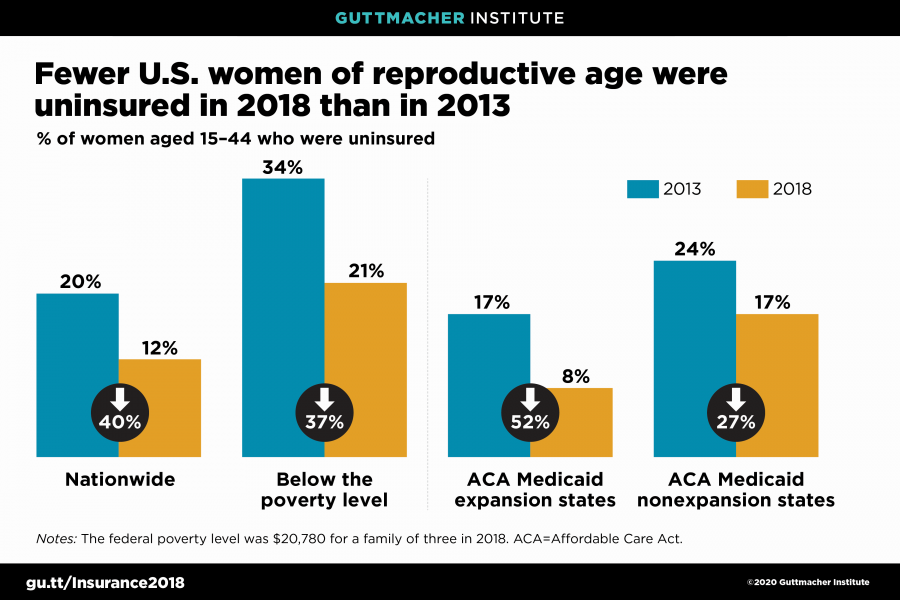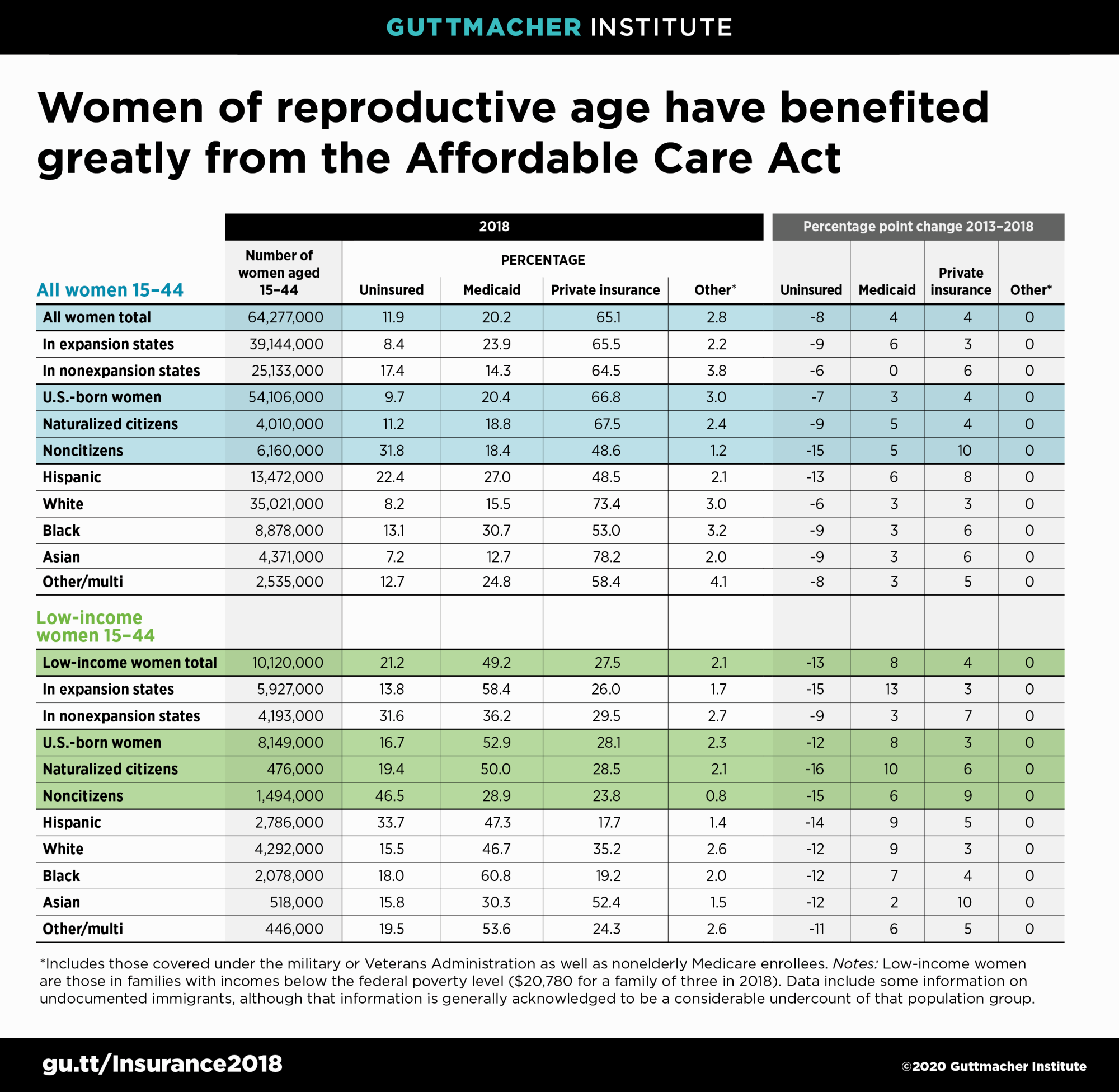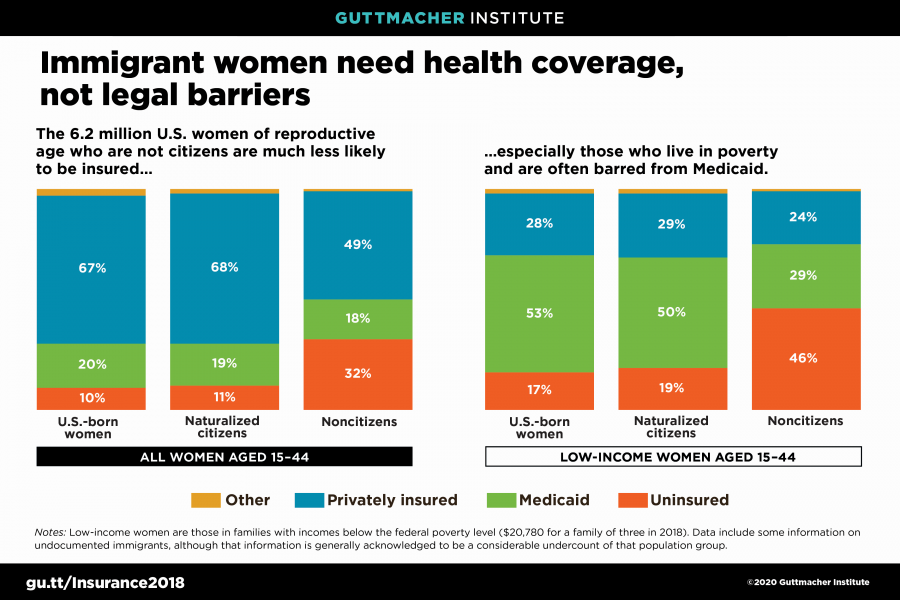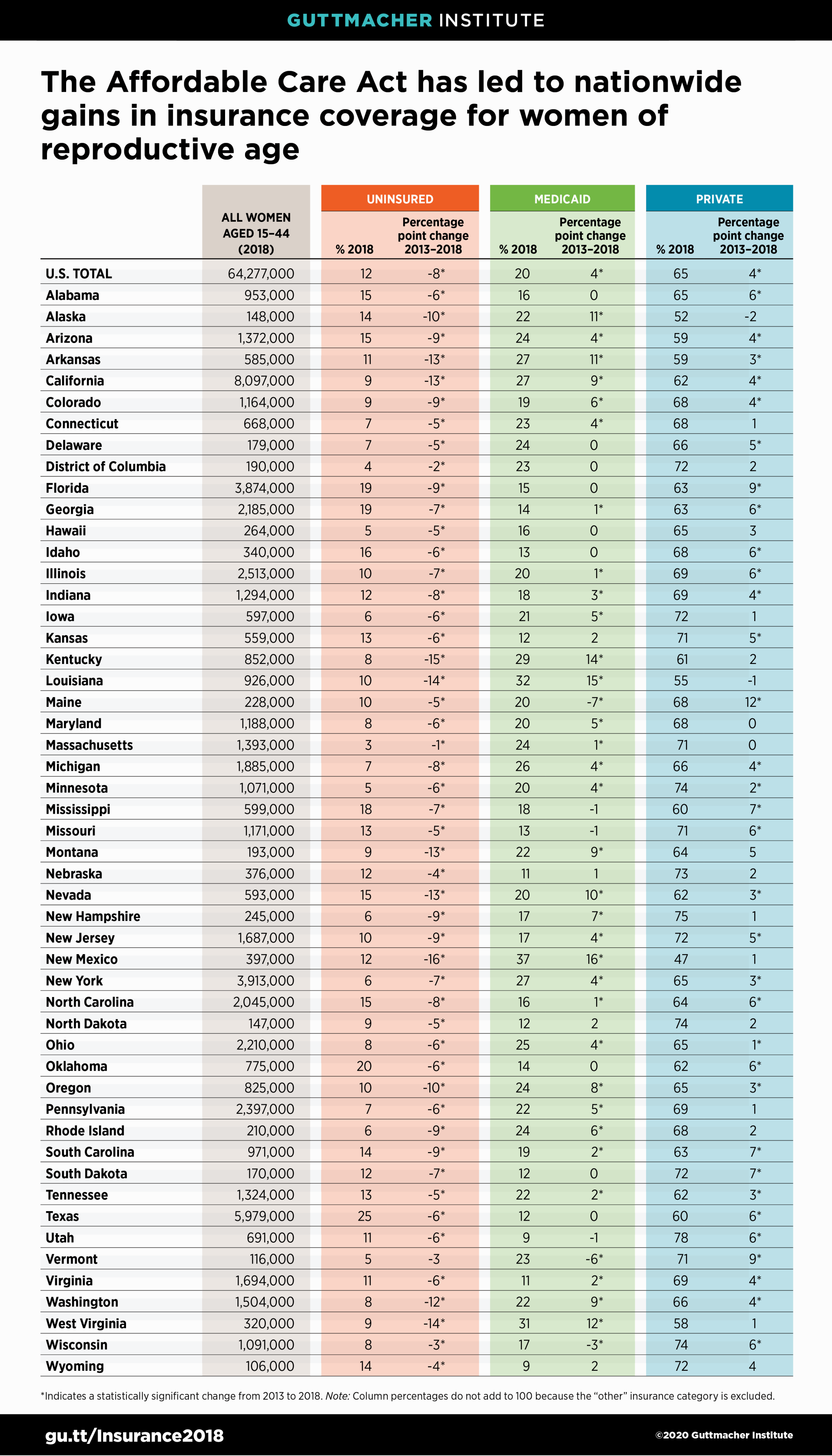This publication has been updated, please see here for the latest version.
Ten years after the enactment of the Affordable Care Act (ACA), several things are clear: The law’s major expansions of Medicaid and private insurance coverage have drastically reduced the number of women of reproductive age who are uninsured. Additional gains could be made if the remaining states agree to take up the ACA’s expansion of Medicaid to include individuals with family incomes up to 138% of the federal poverty level. And all of these coverage gains continue to be endangered by political and legal attempts to overturn or undermine the law.
The proportion of women of reproductive age (15–44) who were uninsured declined from 20% (12.5 million women) in 2013 to 12% (7.7 million) in 2018, in the wake of the ACA’s coverage expansions. This 40% decline was driven by substantial gains in both Medicaid coverage and private insurance. Medicaid, the federal-state health insurance plan for low-income individuals and families, covered 20% of all reproductive-age women in 2018 (13.0 million).
However, all of this improvement took place by 2016, and there was a slight uptick in the proportion of reproductive-age women who were uninsured between 2017 and 2018, indicating that progress has stalled under the hostile policies of the Trump administration.
Gains in insurance coverage specifically among low-income reproductive-age women (those with family incomes below 100% of the federal poverty level) were substantial as well between 2013 and 2018: There was a 37% drop in the proportion who were uninsured and a 20% increase in the proportion covered by Medicaid. That program covered 49% of low-income reproductive-age women in 2018. Despite these improvements, low-income reproductive-age women were almost twice as likely to be uninsured in 2018 as reproductive-age women overall.
Other disparities in coverage also persist. Hispanic women of reproductive age were far more likely than white, black or Asian women of reproductive age to be uninsured in 2018. Similarly, immigrant women of reproductive age who are not citizens had more than three times the uninsured rate of U.S.-born women of reproductive age in 2018. That gap grew wider between 2013 and 2018, likely because many immigrants are barred from eligibility for subsidized private coverage under the ACA and for Medicaid coverage. In fact, nearly half of noncitizen immigrant women aged 15–44 living at or below the poverty level remained uninsured in 2018.
At the state level, improvements in insurance coverage across the country are tied to the ACA’s coverage expansions, particularly the major Medicaid expansion currently adopted by 36 states and the District of Columbia. The uninsured rate declined significantly in almost every state in the country between 2013 and 2018. Collectively, states that implemented the ACA’s Medicaid expansion experienced steeper declines and had one-half the uninsured rate in 2018 (8% vs. 17%) than nonexpansion states.
The fact that so many people have gained insurance coverage over the past five years has major implications for access to sexual and reproductive health care. Medicaid and private insurance include strong coverage protections for family planning, maternity care and other key services. And better coverage matters: For example, health insurance coverage appears to be a key factor influencing contraceptive use, especially among low-income women who are using methods that require contact with the health care system, such as the pill and IUDs.
The ACA’s private insurance marketplaces continue to be stable, and Medicaid expansion continues to gain traction. Since the beginning of 2019 (and therefore after the 2018 data reported here), four more states (Idaho, Maine, Utah and Virginia) have implemented a Medicaid expansion, Nebraska has approved an expansion slated to take effect in 2020 and Kansas seems poised to approve an expansion as well.
Unfortunately for millions of people in the United States, the future of this coverage remains in doubt. As the 10th anniversary of the ACA approaches in March 2020, conservative policymakers in the Trump administration, Congress and in some states continue to undermine the law. Federal officials and conservative state policymakers are pushing forward on attempts to reshape Medicaid in ways that would be dangerous for the millions who rely on it, such as by proposing unprecedented caps on federal funding for the program.
Meanwhile, the U.S. Supreme Court is considering yet another lawsuit about the ACA’s contraceptive coverage guarantee. This time, the Court is considering whether to allow the Trump administration to enforce its 2017 rules that would vastly expand the range of employers and schools that can claim a religious or moral exemption and deny contraceptive coverage to their employees and students.
Moreover, yet another lawsuit challenging the constitutionality of the entire ACA is working its way through the courts, threatening to throw the U.S. health care system into chaos. In December 2019, the Fifth Circuit Court of Appeals allowed the lawsuit to continue, despite a legal argument that has been rejected by experts across the political spectrum. The Supreme Court seems destined to make another high-stakes decision on the law, with the sexual and reproductive health of millions hanging in the balance.
The research in this article was conducted by Ayana Douglas-Hall and Jennifer J. Frost of the Guttmacher Institute, using data from the U.S. Census Bureau’s American Community Survey.




